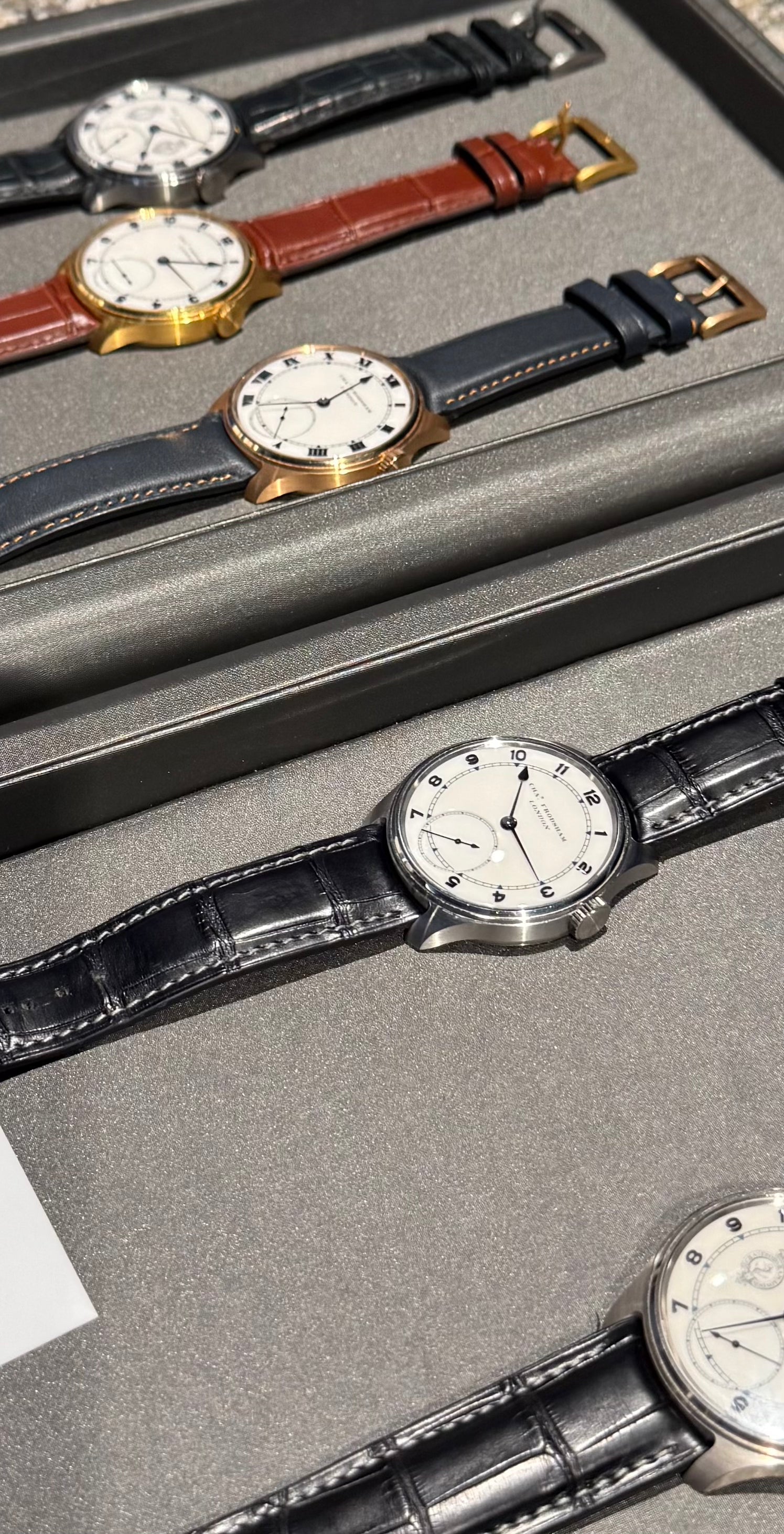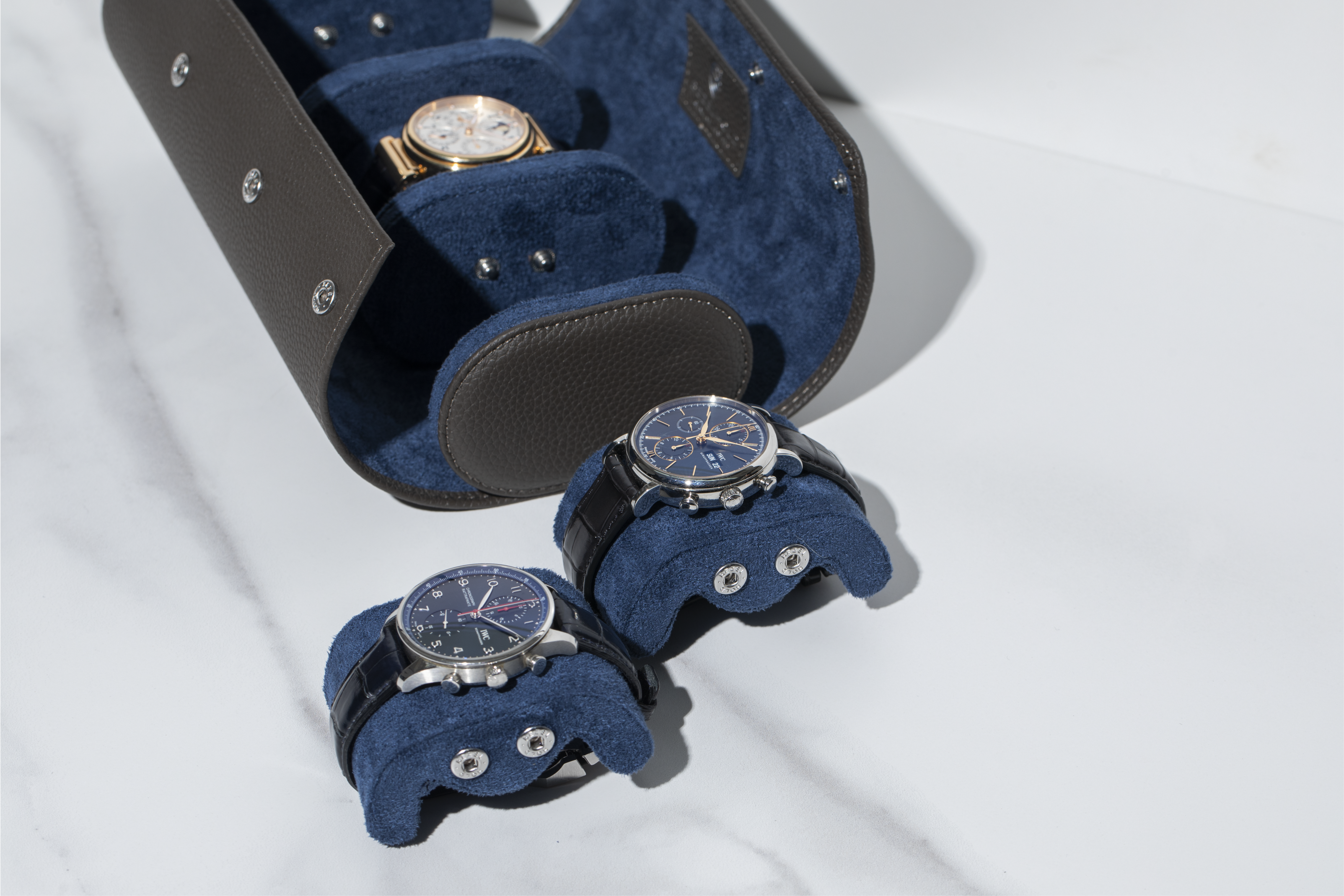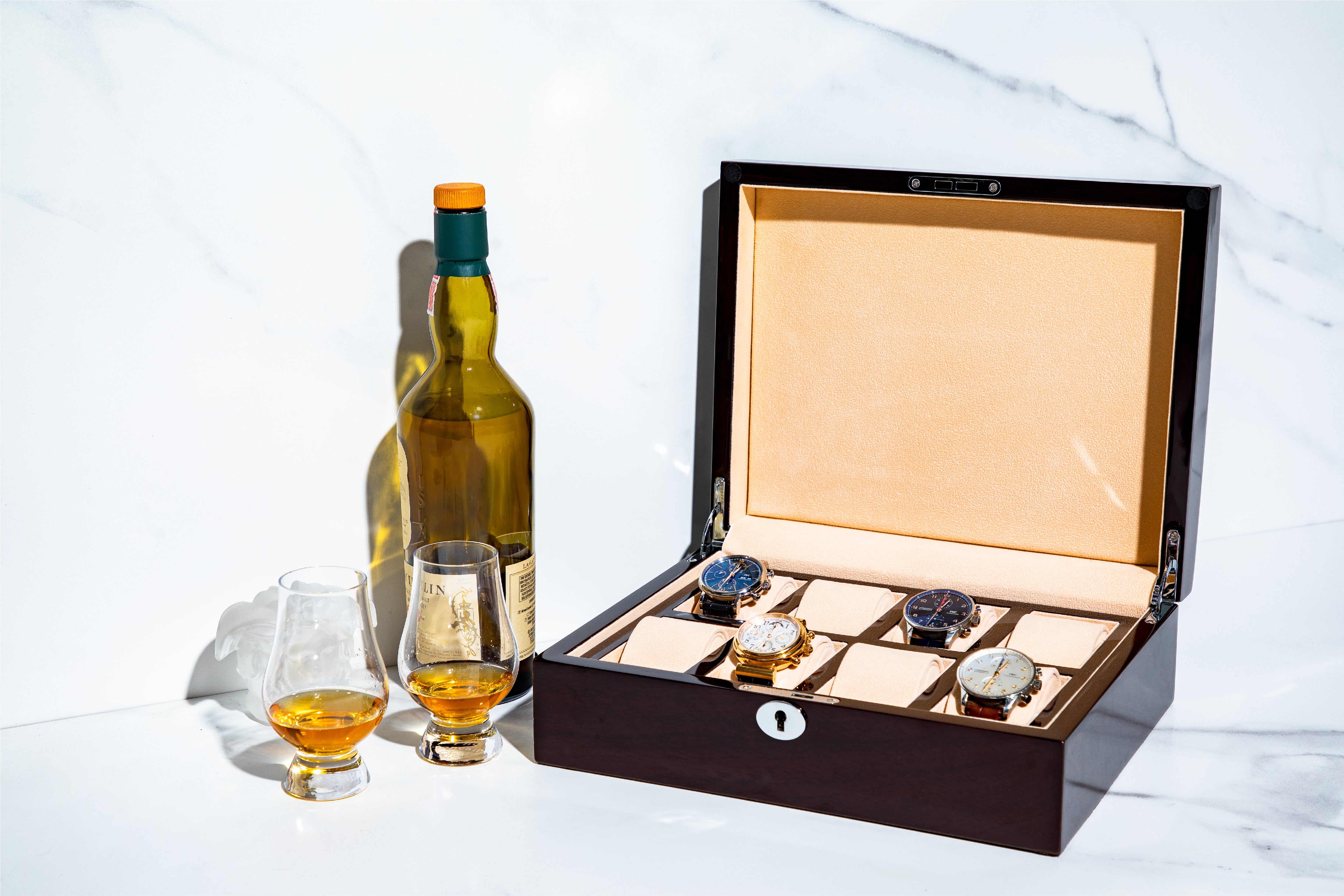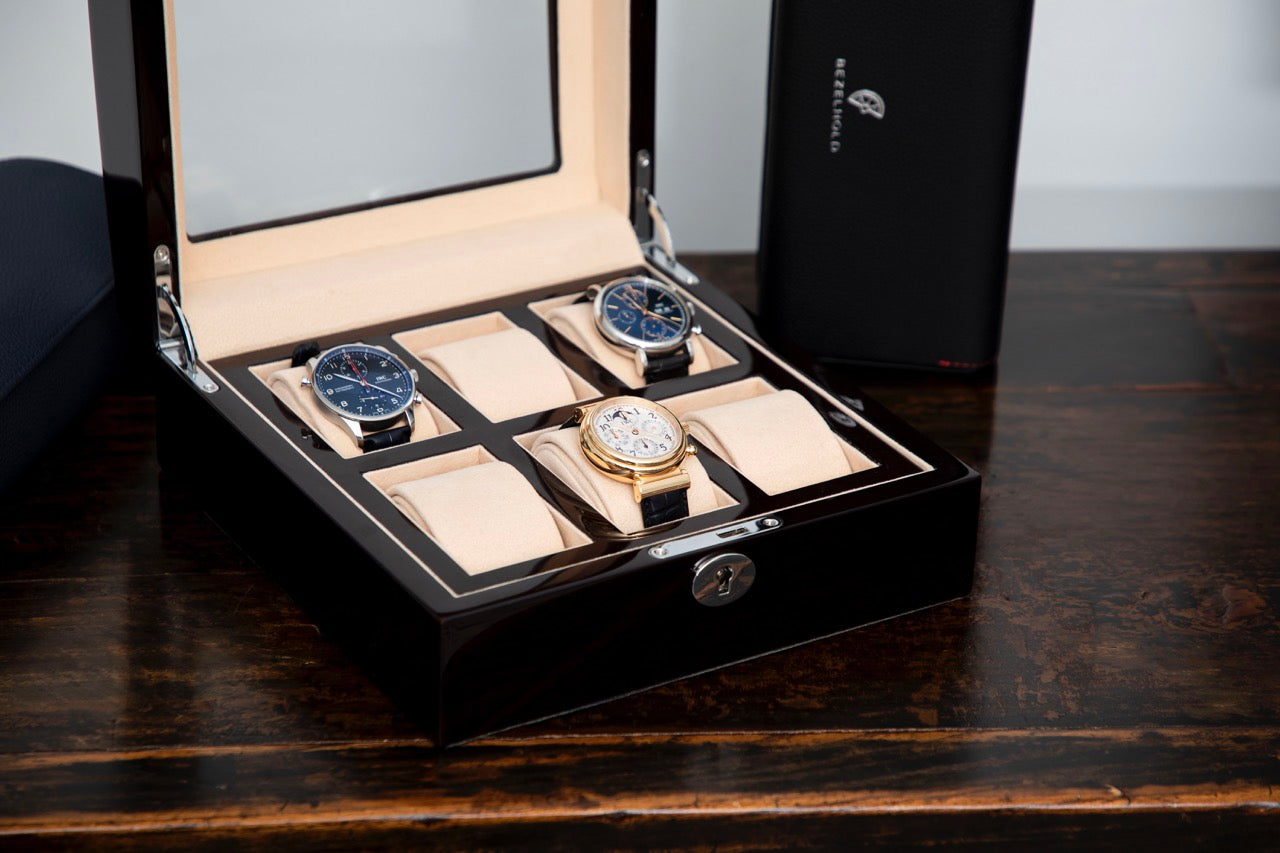
Britain: the forgotten titan of watchmaking
WRITTEN BY EMILY MARSDEN
As my collecting deepens and my taste sharpens, I’ve found myself on a side quest: to understand the watchmaking that happened, and still happens, right here in Britain. In a time when we rarely celebrate British industriousness and craft, it feels important to anchor my research in the small isles I call home. Britain is home to historic titans and fresh blood alike - Richard Stenning of Charles Frodsham in London, Roger W. Smith on the Isle of Man, Rebecca and Craig Struthers in Staffordshire. Each of them, in their own way, continues to wave the flag for the typically stoic, quiet power of British watchmaking. To me, that is a story worth telling.

SOURCE: FRODSHAM - EMILY MARDSEN
Fair warning: I’m a historian at heart. What follows isn’t just about collecting, rather it’s about the evolution of ideas and inventions that shaped every watch on your wrist today.
Walk into most boutiques today and the narrative feels fixed: Switzerland is watchmaking. Yet for much of horology’s most transformative era, Britain led. Quietly and often with flashes of eccentric brilliance, British minds shaped the very principles still found in watchmaking. Take John Harrison, a self-taught Yorkshire carpenter who solved the 18th-century longitude problem. Before Harrison, sailors could chart latitude but longitude was guesswork, and guesswork at sea meant wrecks and lost fortunes. Harrison spent decades refining marine chronometers until, with his H4 of 1759, he proved time could keep ships safe and trade routes reliable. It was one of the most practical inventions in history, reshaping navigation and empire alike. It is why Britain, not Switzerland, gave the world its first truly dependable time. Even London’s most famous timekeeper, Big Ben, was born from the same nineteenth-century culture of precision Harrison inspired.
In 1755, Thomas Mudge arrived with the lever escapement, (yes, that very same lever escapement found in your Swiss watch) the simple, brilliant mechanism that made portable timekeeping reliable for everyday use. Almost every mechanical wristwatch today, Swiss or otherwise, still runs on Mudge’s idea. A British invention, gone worldwide. If we leap forward two centuries to the Isle of Man, we get Mr. George Daniels. Working alone without the industrial might of Switzerland, Daniels created every component of his watches by hand, and went on to invent the co-axial escapement, a friction-reducing system that promised longer service intervals and better precision. It was so revolutionary that the Swiss repeatedly rejected Daniels, but after years of perseverance, Omega eventually adopted it in 1999. Today the co-axial is one of the only truly modern escapements in mainstream production. Daniels proved that a single British watchmaker could still change the rules.
So what happened? Why don’t we talk about Britain when we talk about watchmaking? Industrialisation is a big part of the answer. Switzerland mastered scale with networks of small workshops, reliable supply chains and brilliant marketing. Britain’s makers stayed fragmented and artisanal - a byproduct of a time gone by.

SOURCE: DANIELS
Wonderful for artistry, disastrous for mass production. Wars drained capital and talent. By the mid-twentieth century, the Swiss would dominate watchmaking almost entirely. Yet, the flame never quite went out. Instead, it burnt slowly in the background. Charles Frodsham & Co, with roots back to 1834, quietly produce some of the most exacting watches in the world. Their Double Impulse Chronometer, which uses Daniels’ co-axial ideas, is a masterpiece of modern British engineering. Roger W. Smith continues Daniels’ legacy, crafting every single component of his Series watches by hand and keeping alive the ideal of true independent watchmaking. Rebecca Struthers not only builds bespoke timepieces but also researches and writes about the forgotten corners of our craft.

SOURCE: STRUTHERS - HODINKEE
Remembering this matters. It reshapes what we think we know about timekeeping and innovation. The escapement inside your Swiss watch? British. The marine chronometer that made global trade possible? British. The co-axial Omega markets as modern tech? British again. This is not nostalgia or flag-waving. It is about recognising the true lineage of ideas and seeing watchmaking as a global dialogue rather than a single-country story.
For collectors, it deepens the experience: what is on your wrist isn’t just a Swiss achievement, it is built on centuries of British ingenuity. And for me, as my collection evolves, tracing that lineage feels essential. It turns each watch into more than an object; it becomes a thread in a much larger, often forgotten tapestry.
Britain may no longer dominate the industry, but its fingerprints are everywhere: on every balance wheel, every escapement, every chronometer certificate. To look back is to see the craft differently, not as Switzerland’s alone but as a conversation Britain once led with quiet, world-changing brilliance. And with makers like Frodsham, Smith and a new generation of independents still at their benches, it is a conversation Britain hasn’t quite finished.
ABOUT THE AUTHOR

EMILY MARSDEN
Emily Marsden, behind the Instagram and YouTube accounts @secretdiaryofawatchgirl / @sdoawg, is a London-based writer and collector. Emily has conducted dozens of interviews with leading watchmakers and collectors, and continues to champion independent horology.





Leave a comment
This site is protected by hCaptcha and the hCaptcha Privacy Policy and Terms of Service apply.